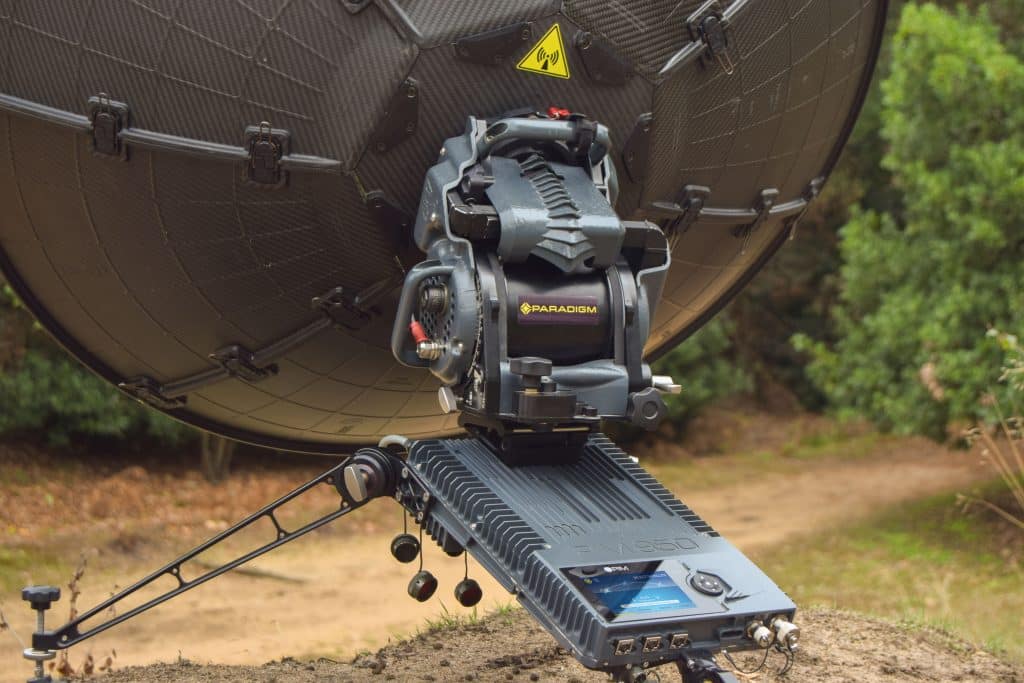Satellite Coverage for Polar Bears and Penguins
Although children’s books and animated films often show them frolicking together, penguins and polar bears actually occupy opposite ends of the earth. Polar bears are found in the far northern latitudes, while penguins occupy the world’s southern oceans and land masses. But Intelsat General provides satellite connectivity to customers with facilities at both ends of the world, one at the northernmost inhabited place on earth, and the other right at the South Pole.
The northern outpost is an Arctic research facility and a weather and radio monitoring station operated in the province of Nunavut, on the northeastern tip of Ellesmere Island. The location is directly north of Greenland and about 500 miles south of the geographic North Pole, closer to Moscow than to Ottawa.
About 75 government personnel and civilian contractors work at the station year round in a maze of connected buildings, surrounded from mid-October to the end of February in perpetual darkness and an average annual temperature of 17 degrees below zero. And yes, there are polar bears. Maintaining morale is vital to operation of the station, so the personnel posted there have amenities such as a tanning salon, gymnasiums, live television broadcasts and recreational facilities to pass their leisure time. The facility is regularly resupplied by plane from a U.S. Air Force base in Thule, Greenland.
Data is generated by the station’s activities as well as daily video phone calls home for station personnel travels via a six-station UHF repeater chain to a small weather station at Eureka on Ellesmere Island and then via Intelsat’s Galaxy C3 satellite to ground stations in Canada.
IGC’s Customer Solutions Engineering group helped implement this unique network which required a data link between the customer’s remote location and their hub in Ottawa. Due to the extreme low look angle the only suitable satellite was the Intelsat G-3C at 95.05 degrees west.
The combination of low look angle and extreme temperature and atmospheric conditions required a two-antenna solution utilizing a “bouncing” technique for transmitting and receiving carriers. The two co-located antennas are vertically separated so that depending on the time of day, one or the other antenna can more effectively “bounce” the signal off the ground to the satellite.
At the bottom of the world closer to the penguins, Intelsat General provides satellite connectivity to a research facility operated by the National Science Foundation at the Amundsen-Scott South Pole Station. The population at the station ranges from around 50 in the dark winter months to over 150 scientists and support staff in the brighter summer months.
The service originally went through Intelsat’s Marisat-F2 spacecraft, but after retirement of that satellite, service shifted to Airbus’ Nato IVB satellite using X-band. The communications signals go through the Oakhanger ground station southwest of London and then tie into the IntelsatOne fiber network for worldwide delivery of scientific data to colleagues at universities, phones calls home, video conferencing, software updates, and emergency telemedicine.
The station at the South Pole uses a weather-hardened X-Band SATCOM terminal. Because of its location on the southern-most point of the Earth, satellite dishes at the Amundsen-Scott station are out of view of geo-stationary communications satellites orbiting the equator. However, the 20-year-old Skynet-4C satellite is in an inclined orbit and drifts slightly above and below the equatorial plane as it orbits the Earth. With its inclination now at 10.3 degrees, the satellite is visible to the South Pole for about five hours each day. The daily visibility will grow as the satellite ages and the inclination increases.
The research at the South Pole is very “data-intensive,” with more than 100 gigabytes of astronomical, climate and other data being sent by satellite on some days. In addition, the satellites are used for Internet access, e-mail and routine communications with scientists around the world interested in the South Pole research.
So even though penguins never see a polar bear, Intelsat General’s customers share the burden of freezing climates, months of darkness, and vital responsibilities at opposite ends of the earth.






















